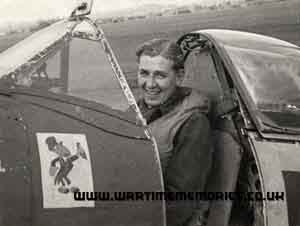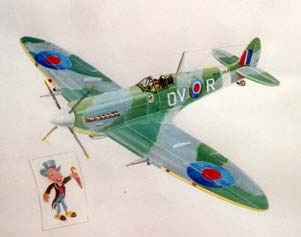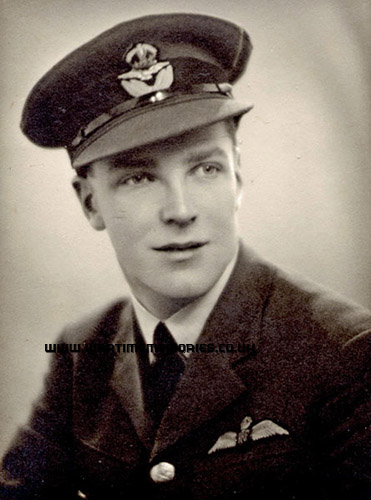|
|
|
Those known to have served at RAF Hornchurch during the Second World War 1939-1945. The names on this list have been submitted by relatives, friends, neighbours and others who wish to remember them, if you have any names to add or any recollections or photos of those listed,
please
Add a Name to this List
|
|
|
The Wartime Memories Project is the original WW1 and WW2 commemoration website.
Announcements
- The Wartime Memories Project has been running for 24 years. If you would like to support us, a donation, no matter how small, would be much appreciated, annually we need to raise enough funds to pay for our web hosting and admin or this site will vanish from the web.
- 22nd April 2024 - Please note we currently have a huge backlog of submitted material, our volunteers are working through this as quickly as possible and all names, stories and photos will be added to the site. If you have already submitted a story to the site and your UID reference number is higher than 263973 your information is still in the queue, please do not resubmit, we are working through them as quickly as possible.
- Looking for help with Family History Research?
Please read our Family History FAQ's
- The free to access section of The Wartime Memories Project website is run by volunteers and funded by donations from our visitors. If the information here has been helpful or you have enjoyed reaching the stories please conside making a donation, no matter how small, would be much appreciated, annually we need to raise enough funds to pay for our web hosting or this site will vanish from the web.
If you enjoy this site
please consider making a donation.
Want to find out more about your relative's service? Want to know what life was like during the War? Our
Library contains an ever growing number diary entries, personal letters and other documents, most transcribed into plain text. |
|
We are now on Facebook. Like this page to receive our updates.
If you have a general question please post it on our Facebook page.
Wanted: Digital copies of Group photographs, Scrapbooks, Autograph books, photo albums, newspaper clippings, letters, postcards and ephemera relating to WW2. We would like to obtain digital copies of any documents or photographs relating to WW2 you may have at home. If you have any unwanted
photographs, documents or items from the First or Second World War, please do not destroy them.
The Wartime Memories Project will give them a good home and ensure that they are used for educational purposes. Please get in touch for the postal address, do not sent them to our PO Box as packages are not accepted.
World War 1 One ww1 wwII second 1939 1945 battalion
Did you know? We also have a section on The Great War. and a
Timecapsule to preserve stories from other conflicts for future generations.
|
|
Want to know more about RAF Hornchurch? There are:105 items tagged RAF Hornchurch available in our Library There are:105 items tagged RAF Hornchurch available in our Library 
These include information on officers, regimental histories, letters, diary entries, personal accounts and information about actions during the Second World War. |
|
P/O Franklin 65 Squadron P/O Franklin was stationed at RAF Hornchurch in 1940. I believe he was killed shortly after. I am seeking any information about him, especially a photograph. There is a road in Hornchurch named after him....Why?
|
P/O. William Henry Franklin DFM & Bar 65 Squadron (d.12th Dec 1940) William Henry Franklin is my uncle. I have been trying recently to find information on him. I have found out a little. He was one of the ace pilots in the Battle of Britain. He has a street named after him in Hornchurch where his squadron was based, which I thought was lovely. He was just 29 when he died on 12/12/1940. He was married, but had no children. I am hoping, as a near relation (niece), I will be ble to retrieve some information, records, photo, etc. If anyone knows the best way to do this could they advise me, as I am new to this. I would appreciate any help with my search at this time. I will add more as I find out more information.
|
F/Lt. Mervyn F.S. Young 129 Sqn, 72 Sqn   A good friend of mine was based at RAF Hornchurch in 1943 - Flt Lt Mervyn Young of 129 Sqn & later 72 Sqn in Italy & Europe. He flew Spitfire DV-R (Serial No MH384).
Mervyn told me that he was inspired to become a fighter pilot after watching the Howard Hughes Movie Hells Angels about WW1 Fighter pilots. He said his flight commander ‘Wag’ Haw had the same thoughts after seeing the movie.
He flew many missions in Europe including Ram-rod missions in support of the daylight bombing raids, mostly B17’s including the famous Memphis Belle at one time.
On one sortie his No 2 Sgt Carmichael was shot down & killed but in 2003 his aircraft was recovered & in Sept' 2003 Mervyn was among the memorial parade with full miltary honours for Sgt Carmichael; lost on a sortie over Belgium & located 60 years later, the fateful sortie was flown while Mervyn was based at RAF Hornchurch.
Sadly Mervyn passed away in March 2006, I enclose a photo taken at RAF Ibsley in his Spit' DV-R (MH384) complete with his mascot logo of Jiminy Cricket.
|
F/Lt. William Radcliffe Assheton DFC. 222 Squadron  William Assheton was born on 12th December 1917 in Kent and attended Sherborne School in Dorset. He went on to study Electrical Engineering at Jesus College, Cambridge but before completing his degree he joined the RAF on a short service commission in early 1939.
He was posted to 222 Squadron at Duxford in early November.
In August 1940 the squadron was at Hornchurch when the Battle of Britain began. On the 30th Assheton crash-landed at Bekesbourne Aerodrome in Spitfire R6720 after combat over Canterbury.
On 11th September he made a forced-landing on Parsonage Farm, Fletching, in Spitfire R6638, after an action over the Maidstone area
Assheton's third escape came on 20th September when he baled out with slight burns, after being shot down in a surprise attack by Me109's over the Thames Estuary. He landed at Latchington and was admitted to St. Peter's Hospital, Maldon. His Spitfire, K9993, crashed and burned out at Linkhouse Farm, West Hanningfield.
In 1945 Assheton was awarded the DFC (gazetted 10th April 1945) for service with 540 Squadron, a Mosquito photographic-reconnaissance unit.
He remained in the RAF after the war, graduated from the RAF Staff College and retired on 22nd November 1957 as a Squadron Leader.
He then moved to Spain where he died in November 2009.
|
LACW. Lillian Kerry Lily Kerry served in Baloon Coomand. Postings as detailed in Lilian Kerry's service record, records she served at RAF Hornchurch (Romford) was as an Aircrafthand Cook.
During World War II RAF Hornchurch was a Sector Airfield of RAF Fighter Command's 11 Group, covering London and the south east of England during the Battle of Britain in 1940. By this time, its command centre was in Romford, and a satellite station (an advanced attack outpost; RAF Rochford) was unpopular with the Hornchurch crews sent there from time to time because of the canvas accommodation.
She was posted to RAF Innsworth This station opened in 1940, the first unit based there being No 7 School of Technical Training who trained engine and airframe fitters and mechanics. More than 2,000 officers and men were based at Innsworth by the time training began in earnest in 1941, this being delayed due to the arrival of 1500 RAF evacuees from Dunkirk.
In December 1941, No 2 WAAF Depot was opened at Innsworth and from then on the Station became increasingly associated with the Women's branch of the service. By the end of 1941 the strength of the Station had risen to more than 4,000 including trainees. Eventually it was decided to reserve the Station almost exclusively for WAAF training, including barrage balloon training amongst other vital roles.
A notebook page of Lilian Kerry in her own hand, records the correct way to lay her kit out. She was from No. 31 W.A.A.F. Recruit Centre, Morecombe as an Aircrafthand Cook) ACH Cook in December 1942. Morecambe, like all other coastal resorts, very entertaining when the sun was shining, so we were very much unimpressed when greeted with torrents of rain. But we forgot this in the excitement of unpacking our newly acquired kit and sorting ourselves out in the boarding house, which was to be our billet. A rather small but neat comfortable and adequate room, furnished in the sparse but usual RAF manner. This was to be our 3 weeks training period at the end of which each one of us would know where our ultimate job would be.
On 14th of January 1941 she was posted to No: 2 Recruitment Centre), RAF Cardington, Bedfordshire. In 1936/1937 Cardington had started building barrage balloons and it became the No 1 RAF Balloon Training Unit responsible for the storage and training of balloon operators and drivers. In 1943 until 1967 it was home to the RAF Meteorological research balloons-training unit, undertaking development and storage
11th of Feb 1943 Lily was an Aircrafthand Cook at No 2 Personnel Despatch Centre, Wilmslow. The station was used for training new recruits. The recruits would learn about living RAF procedures and other information for a period of weeks then would be transferred to their operational station.
In March 1943 she was posted to No 8 School of Technical Training at RAF Weeton. It ran conversion courses for Flight Mechanics and Flight Riggers, and there were many instructional airframes on the ground to practice on.
She was promoted to A.C.W.2 as a Cook on 21st of April 1943 while serving at No. 30 (Balloon Barrage) Group Auxiliary Air Force, RAF Chigwell. The Balloon Centres were responsible for maintenance and supply to the Balloon Squadrons in its area as well as balloon repair and flight control.
The Balloon Barrages proved to be an effective method of protecting strategically important areas against air attack, in that should enemy aircraft fly into the winch cable the damage inflicted would almost always result in destruction. Should enemy aircraft attempt to avoid the cables by flying above the Barrage Balloons then they could not bomb their targets with accuracy. RAF Chigwell was the only aeronautical location to hold the name correctly, was set up as the recruiting station for No.909 Balloon Unit and opened in 1938. With a new war clearly looming, a new formation was set up to operate a variant on the Great War defensive balloon and the observation kite balloon of the Western Front. Largely concentrated on a site to the east of the River Roding it lay in between the area of its title and Buckhurst Hill. The site was mainly concentrated in an area to the north of Roding Lane but there were a number of minor satellite-works, including some which encroached upon the site of the former civil airfield of New Barns Farm to the south and across Roding Lane to the east.
On 1938-08-04 No.4 Balloon Centre was established there, with No.30 Barrage Balloon Group, the local operational army being based there in 1940. The site is best remembered as the home of the Central Test Board assessing airmen for ground trades.
On 15th of December 1945 Lily was at RAF Cheddington, her trade is recorded as Cook, Character Very Good, Trade Proficiency A Stat.
On 24th of May 1946 Lily was at RAF Cottesmore with >No 16 Operational Training Unit when she was awarded a Good Conduct Badge. Her final posting was to await demobilisation was to
RAF Wythall, No 105 Personnel Despatch Centre (WAAF) Wythal which handled the release of servicewomen from all types of air force work.
|
Recomended Reading.Available at discounted prices.
|
|
|








